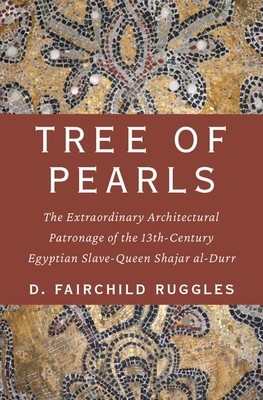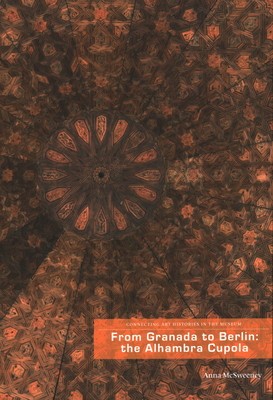
Podcast
Tree of Pearls: The Extraordinary Architectural Patronage of the 13th-Century Egyptian Slave-Queen Shajar al-Durr
An Interview with D. Fairchild Ruggles
Shajar al-Durr--known as "Tree of Pearls"--began her remarkable career as a child slave, given as property to Sultan Salih of Egypt. She became his concubine, was manumitted, became his wife, served as governing regent, and ultimately rose to become the legitimately appointed sultan of Egypt in 1250 after her husband's death. Shajar al-Durr used her wealth and power to add a tomb to his urban madrasa; with this innovation, madrasas and many other charitably endowed architectural complexes became commemorative monuments, a practice that remains widespread today. A highly unusual case of a Muslim woman authorized to rule in her own name, her reign ended after only three months when she was forced to share her governance with an army general and for political expediency to marry him.
Despite the fact that Shajar al-Durr's story ends tragically with her assassination and hasty burial, her deeds in her lifetime offer a stark alternative to the continued belief that women in the medieval period were unseen, anonymous, and inconsequential in a world that belonged to men. D. Fairchild Ruggles' Tree of Pearls: The Extraordinary Architectural Patronage of the 13th-Century Egyptian Slave-Queen Shajar Al-Durr (Oxford UP, 2020)--the first ever in English--places the rise and fall of the sultan-queen in the wider context of the cultural and architectural development of Cairo, the city that still holds one of the largest and most important collections of Islamic monuments in the world.
Tanja Tolar is a Senior Teaching Fellow at the School of Oriental and African Studies in London.
Visit site
Podcast
From Granada to Berlin: The Alhambra Cupola
An Interview with Anna McSweeney
Part of the series CAHIM Connecting Art Histories in the Museum, Anna McSweeney's book From Granada to Berlin: The Alhambra Cupola (Kettler Verlag, 2020) is the story of an extraordinary survivor from the Alhambra palace in Granada, Spain: the Alhambra cupola, now in the Museum of Islamic Art in Berlin. The cupola, a ceiling crafted from carved and painted wood, was made to crown an exquisite mirador in one of the earliest palace buildings of the Alhambra. The book is the cupola's biography from its medieval construction to its imminent redisplay in Berlin. It traces the long history of the Alhambra through the prism of the cupola, from the Muslim craftsmen who built it, to its adaptation by the Christian conquerors after the fall of Granada in 1492, to its creation as a heritage site. The cupola was sketched by artists from across Europe before it was dismantled by a German financier and taken to Berlin in the 19th century. It witnessed the dramatic events of the 20th century in Germany and was eventually bought by the Museum in 1978. In recent decades, the new visibility of the cupola to the wider public has prompted questions about the object and its movement from Granada to Berlin. Its removal from the Alhambra and the complex reasons behind this loss is central to this biography. Setting the cupola within the wider context of Islamic heritage, it considers the role of collecting practices in the transformation of living monuments into heritage sites in the 20th century. This book presents a focused study of this unique object that cuts across academic disciplines and geographic boundaries to reveal a new perspective on the legacy of Islamic art in Europe and its continuing relevance today.
Tanja Tolar is a Senior Teaching Fellow at the School of Oriental and African Studies in London.
Visit sitePodcast
Jerba: An Island in Time, with Prof. Renata Holod, University of Pennsylvania
Ottoman History Podcast--For the first time on the podcast, we discuss the role of archaeology and its potential to contribute to our knowledge of the Ottoman world. More specifically, we explore how the field of landscape archaeology can offer a better understanding of how different factors of religion, politics, and culture impacted the manipulation of territory over millenia. The large-scale examination of material culture and vernacular architecture in a rural setting particularly has the potential to fill in the gaps of the historical archive, providing information about communities that otherwise remain relatively unknown. In this episode, we speak with Renata Holod, who co-directed a multi-year archaeological and architectural survey of the island of Jerba, off the coast of Tunisia. Our conversation not only explains the techniques and methodologies deployed during the project, but also ranges to wider reflections on the different ways the arrival of the Ottomans on the island can be read in the landscape itself.
http://www.ottomanhistorypodcast.com/2018/03/jerba.html
Visit siteSubmit resources and publications
Please submit resources to the HIAA webmaster including the resource name and type, and several sentences about its nature, and a link to further information.
